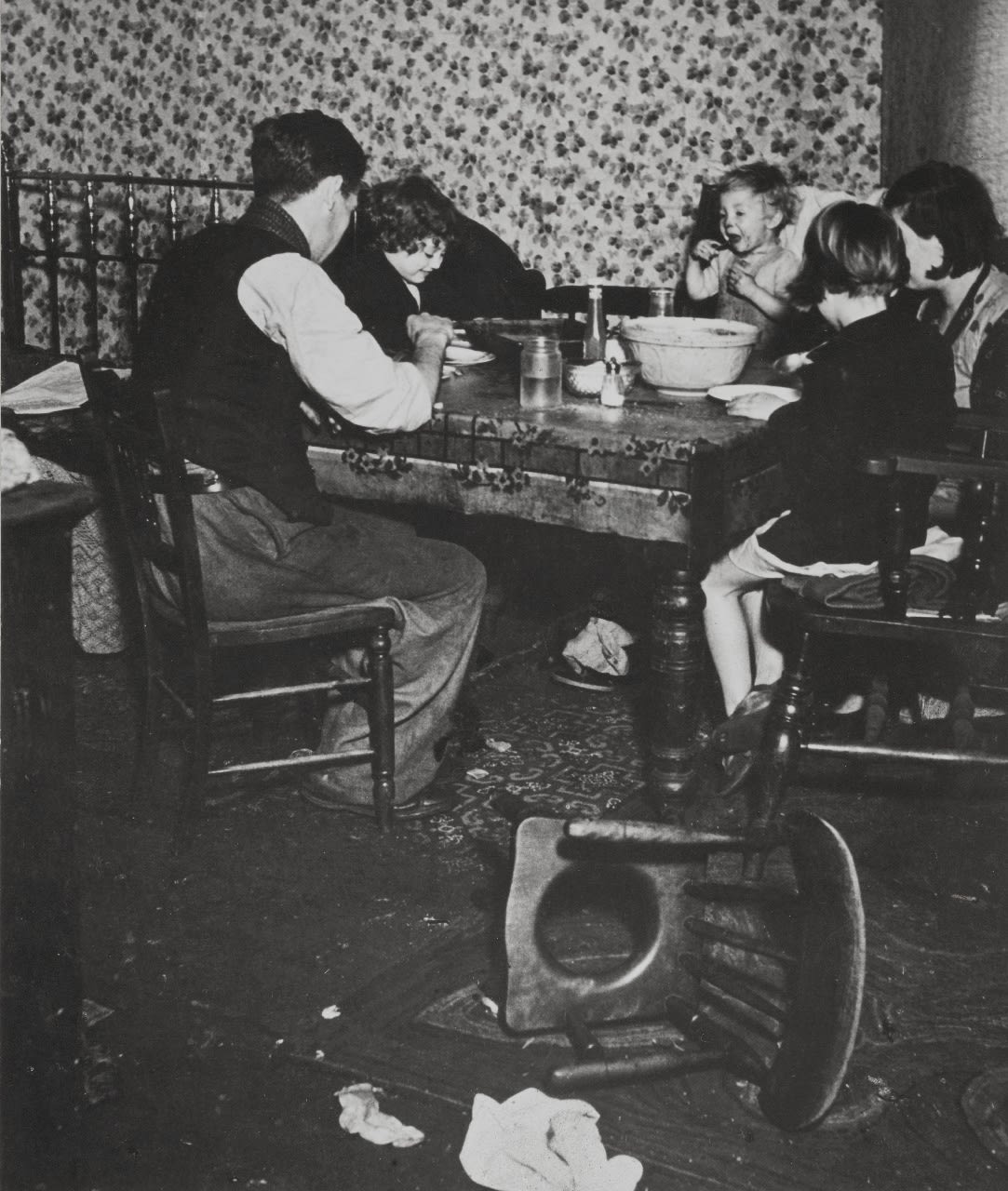-
Artworks
Bill Brandt
Hurst Family, Jarrow, 1937, 1937Early Gelatin Silver Print33 x 27.8 cms 12 15/16 x 10 15/16 insSeries: 1. The English at Home9276Further images
Provenance
Private CollectionLiterature
Bill Brandt. London in the Thirties, 1983, illustrated full page plate 17, entitled "Family Dinner". (Brandt was notorious for reusing images adapted to suit their new purpose: an image might reappear differently printed, cropped or even reversed to work better on a double page spread. In the case of this picture an image of Jarrow in Northern England is more neutrally retitled for inclusion in a book on London and placed in its opening section on "The London of the Poor").
Bill Brandt, Camera in London, Focal Press, 1948 (illustrated full page p. 46, entitled "Family Supper")Gelatin silver print, mounted on board. Signed in ink on the mount. Oversized print. Printed 1950s; mounted not later than 1975. This photograph is a particularly significant example of Brandt's...Gelatin silver print, mounted on board. Signed in ink on the mount. Oversized print. Printed 1950s; mounted not later than 1975.
This photograph is a particularly significant example of Brandt's important series of works responding to the poverty he found in Jarrow in Northern England.
As well as this exhibition print, the Hyman Collection also has five letters from the photographer, two handwritten and three typed, on the topic of the 1975 'Palmer's Yard and the Town of Jarrow' exhibition staged at the Bede Gallery in Jarrow, at which the present was exhibited. Dating from 2nd June to 27th November 1975, each letter is signed in ink by Brandt and is on the photographer's '4 Airlie Gardens (Flat 4c), Campden Hill, London, W8' headed paper. In the letter dated 3rd October 1975, Brandt describes his thoughts on Jarrow, stating, 'Ever since I took the photographs there, 40 years ago, I have had very warm feelings for Jarrow.'
Commissioned by Picture Post in the late 1930s, Brandt photographed the Hurst family in their Jarrow home, illustrating the poverty suffered within the town during the inter-war years. Once an area of booming industry, the Great Depression saw the collapse of Jarrow's iron, steel, and shipbuilding manufacture, which left many in the area struggling to support their young families. This image, along with a small number of others taken of the Hurst family in the same sitting, was not published until after World War II.
It was at the Bede Gallery exhibition that Martie Gowens, a member of the gallery, recognised her mother, father, and siblings in the present photograph. Although she is not pictured, Martie went on to confirm with her older sister Margaret (b.1932 and seated second from the left) that this image was, in fact, from the Brandt sitting that occurred during their youth. Also pictured around the table are the girls' father Owen Hurst (b. 1908), brother Owen (b. 1936), mother Margaret (b.1909), and sister Jenepher (b.1930).
Reflecting on her mother's reaction to the publication of the photographs years later, Gowens was aware that she felt 'great shame,' in seeing the images. As with many of his documentary photographs, Brandt had taken liberties in arranging the furniture and subjects in a way that would best demonstrate the family's suffering, most notably the tipped chair in the foreground. By the time of their publication, however, the family's financial situation, along with Jarrow's industrial status, had improved.
Correspondence:
Gowens, Martie. "Hurst Family Photograph." E-mail to James Hyman, 1 August 2012.
Despite being taken in Northern England this photograph appears in two books on Brandt devoted to his photographs of London, Camera in London and London in the Thirties.
Copyright The Bill Brandt Archive, London / Courtesy Edwynn Houk Gallery, New York / Zürich. 2018.
British Photography / The Hyman Collection





